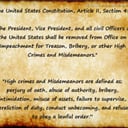The "Tennis Court Oath" was a pivotal event in which historical struggle?
Trouble was brewing in France in the 1780s: a growing French population was starving, the feudal system of economics was losing its grip across Europe, and a new country, the United States, had recently been founded via revolution.
The country was in major debt, and King Louis XVI had just hiked taxes. In 1789, after widespread unrest and failed attempts at reform, the King, in a desperate attempt to address the economic crisis, assembled the Estates-General, a representative body consisting of three separate “Estates” or classes. The first two Estates were made up of 1) France's Catholic clergy and 2) the nobility. The majority of the remaining citizens, including lower-ranking clergy and commoners, were represented by the Third Estate. The meeting was to be the first time all three groups had gathered in over a century.
Although the Third Estate had the most representatives, it still had only one vote. Members and allies of the Third Estate argued that each representative (rather than each Estate) should get a vote. The King's supporters disagreed, and retaliated by locking them out of the meeting hall.
Without access to their usual venue, the members of the Third Estate resorted to using the King's indoor tennis court, in defiance of King Louis XVI’s order to disperse. Once there, they took an oath not to disband until France had a new constitution.
When Louis XVI failed to back down, Parisians stormed the Bastille, beginning the French Revolution in earnest.
More Info:
www.history.com







